
Derek Brown, Director Michelin Red Guides (2000 – 2004)
Derek Brown enjoyed a long and distinguished career at Michelin, where he took on various executive responsibilities including director of Michelin Red Guides (2000 to 2004), the first non-French holder of such a position. Perhaps feared and revered by a great pantheon of chefs, many of his actions through various chef autobiographies, have become industry folklore. Here Derek speaks openly about his career, experiences and observations. Interview was conducted by Simon Carter on February 12th 2015.
Tell us some background about the expansion of Michelin Guides outside of France?
The expansion of the Michelin Guide outside of France started well before the first world war. For instance there was an early guide to Great Britain from 1911 to the early 1930s (leaving out the first world war years). In modern terms (after World War Two) when the only running Guide was to France, the Guides to Italy, Germany, Spain and Benelux followed, each being published by the end of the 1960s.
From a Great Britain and Ireland perspective, it was decided by around 1969 that some very experienced inspectors from France should come over and conduct a survey into what levels of quality of hotels and restaurants existed in the territory to establish whether a viable guide could be created. At that time each Guide had in-country inspectors, so when the decision was made to create a Guide to this region, an in-country team was recruited.
I joined Michelin in 1971, as an inspector, having come from the hotel industry.
Tell us some background about yourself?
Originally I attended Hotel School completing a four year course at College in Bournemouth. My first working role was as a sommelier in a big Austrian ski-resort hotel. After this, work took me to London and the opportunity to spend around two years with Forte including completing a management programme. An opportunity arose to assist in the launch of a restaurant; setting up the menus and helping with the procurements as well as managing the operation for 18 months. There followed a move to a hotel in the west country as general manager, where the sequence of events leading to Michelin happened when one day I noticed an advert in a five month old copy of Caterer!
It was seeking inspectors. I thought it would be too late but phoned Michelin to find out if they were still recruiting. Two interviews followed, the second with the man who had been sent from France to set up the Guide in Great Britain and happily I was recruited.
The first Great Britain & Ireland Guide was published in 1974, the French editor of the guide moved back to France after the publication of the 1975 Guide and I was promoted to edit the 1976 Michelin Guide to Great Britain & Ireland. Those early years involved significant research. A small group (six or seven inspectors) covered the territory to identify those restaurants and hotels that were appropriate for the Guide and where they would fit into the Michelin classification system. We were all well trained, being sent to other regions to learn and be trained. I spent some time in Germany because I had worked in Austria and could speak a little German, I also spent time learning in France.
Time was invested researching each town, city or county to gather information on exactly where inspections would be scheduled. At that time, Michelin didn’t include those establishments that were pubs, guest houses or non-licensed addresses, so in summary it was purely hotels and restaurants. In terms of the restaurants we identified a short list of prospects that may have deserved recognition. Maybe fifty or sixty stood out (not hundreds as would be the case in modern times). We revisited these often and typically with different inspectors, a process which built a natural dossier of experiences. It was a collegiate collaboration of knowledge that led to any decision.
Awarding stars was a democratic process, you wouldn’t successfully have the last person speaking winning the day (even for example when that person is the editor) as there would have been a sufficient body of opinion by that time to make a fully rounded decision one way or another. In fairness the editor would have visited earlier in the process to ensure the team were on the right track in evaluating an address for recognition before further visits ratified a consensus that an award should be made to an establishment.
For the very first Guide in 1974, a small and highly experienced team of inspectors from France came over, to help with the star selection, to ensure standards were maintained, particularly among the borderline cases for inclusion. It made absolute sense to make use of that experienced resource and was all part of the learning process.
In any case, it was clear there was a strength about food within the team and there was no sense of “French control,” we were employed by Michelin the same as any other employee and as such were trusted to represent the Michelin Guide in Britain and Ireland.
How did your role at Michelin personally develop?
The French manager (editor) was asked in around 1973 to set up a sales arm for the Michelin Maps and Guides in Great Britain. This had previously been done by an agency. He was also challenged with managing the production of the inaugural GB&I Michelin Guide scheduled for 1974. He needed someone to help manage the running of the Michelin Guide for GB&I so I was given the role of assistant. In practical terms, from that point on, I effectively coordinated the day to day running of the team of inspectors as well as conducting inspections myself.
 So when it was decided, in 1975, after having been in the UK for five years that the French manager would move on to something new in the company I was officially promoted to editor of Michelin Guide Great Britain & Ireland. This was a fairly natural progression, the French hierarchy knew me by then, I could speak French, there were also coordinators in head office whose responsibility was to ensure that all the geographies were singing off the same hymn sheet for Michelin and they were more than satisfied with the early work completed in Great Britain & Ireland.
So when it was decided, in 1975, after having been in the UK for five years that the French manager would move on to something new in the company I was officially promoted to editor of Michelin Guide Great Britain & Ireland. This was a fairly natural progression, the French hierarchy knew me by then, I could speak French, there were also coordinators in head office whose responsibility was to ensure that all the geographies were singing off the same hymn sheet for Michelin and they were more than satisfied with the early work completed in Great Britain & Ireland.
So the first book I was officially responsible for as editor was 1976. There were 31 stars in 1976 having grown from 25 stars in the first Guide. At the same time as I became editor, the division was split in two between a sales office and a Michelin Guide book operation. An experienced tyre company sales manager was brought in to build up the sales arm, while I spent the following nine years responsible for Michelin GB&I. In 1984 I was promoted to take charge of both sides of the publishing operation.
The sales arm was the second largest market for Michelin Maps & Guides outside of France, so it was a big responsibility. Having effectively been responsible for the communications of the Michelin Guide GB&I (talking to the media and working with our Advertising agency), I had experience of marketing, PR and advertising which of course was required by the sales division (the sales arm included all maps and guides published by Michelin).
I had a sales manager reporting to me for the pure sales operation – in those days every sizable town had a dozen or so different shops that sold books and who may have demand for stock, nowadays I imagine the job has gone even more online and digital with the likes of Amazon as stockists. Perhaps WH Smiths and Waterstones are two of the few survivors of our changing times! There was an 8 to 10 strong sales team in the mid-1980s managing that process at that time.
I ran those two divisions between 1984 and 1996. Through this time there was a revolution happening in hotel styles and types as well as gastronomic development. The birth of Travelodge and other similar chains were doing at the lower end to privately owned small hotels what supermarkets were doing to corner shops. In the early days it was only ‘three or four pavilion’ hotels or the newest of the hotels where all the rooms had private bathrooms!
In 1992, I was asked to take on the further responsibility of running the PR and advertising department for UK Michelin (the tyre company) as the department director had retired. So I had a rather large portfolio on my hands at this time.
During 1996 a big reorganization at Michelin led to my moving from publishing to purely communications. Derek Bulmer took on the Michelin Guide GB&I editorial role and the prior sales manager took over the publication sales operation.
In my new role, I remained responsible for the UK Communication department but was given additional responsibility as coordinator of communications across Africa, Middle East and Asia from my base in London. Events moved quickly, as Michelin’s operations in Asia were growing rapidly and an Asia-Pacific Headquarters was created in Singapore, so after a relatively short period of time of being based in London, I was subsequently sent to the new HQ as Director of Communications for Michelin Asia Pacific.
I would possibly have continued in that role for the rest of my career, but when my predecessor retired as Director of the Michelin Guides in 2000, it was a great honour to be asked to take on that role and of course I could not refuse!
Did you always have at least one announced inspection of an address?
We always had the practice of at least one announced inspection a year for each of the hotels and restaurants, simply to gain as much information as possible and see those areas we would otherwise not see as a paying customer. It was also useful to see if there were any expected changes coming up in the year ahead as the Guide had to be reliable for the year after being printed.
How did you break the news of major star promotions or demotions?
From 2000 to 2004 when I was managing the Michelin Red Guides, I would tell every restaurant across Europe personally whether they had a promotion from two stars to a third star and likewise should they be demoted from three stars to two stars. During the year restaurants were not warned about their status, however (particularly in France) the three star chefs would typically be in touch with Michelin on an annual basis and they would be given an indication of what the public, who bought the guide, were saying about their restaurants. This might lead to ‘concerns’ or ‘opportunities’ which the chef could choose to action or not, the guide never told chefs what to do, as that was neither our place nor our role.
What do you think of the on-line information age and its impact on Michelin?
It is part of the world that Michelin populates so it must be embraced. Just as the company pioneered over a century ago, Michelin will continue to make good use of the tools of its time. From Michelin’s point of view so long as you apply the same disciplines in the way you interact with any element of the media and extend that to Twitter, Facebook and so on, then the results are likely to be uniform in achieving the objectives desired.
At the most basic level, what I am unsure about in the information age public-led experiences (like Twitter or Trip Advisor) is that I am not sure if there is a filter where someone has verified the validity of an accusation (or even a strong opinion) prior to publication. A professional inspector-led guide like Michelin will have all feedback properly investigated and verified carefully before acting on a recommendation. Public-led feedback is more likely to be emotionally led rather than analytical, in the sense that people are motivated to write by their emotions rather than paid to write as professional inspectors, who only report objectively.
In the 1950s and 1960s the world was much less open, people did not bare their souls on web based social networking platforms, nor similarly did Michelin talk about how it made its guides. From that developed, perhaps, this sense of mystery and aura about the Michelin Guide that has proven an extraordinary marketing tool. It was nothing that we ever cultivated but it just happened naturally during that period of time and stayed with the guide for many years. It was probably originally a case of simply being careful about competitors (and there were many) in every territory and not wanting them to know how Michelin worked.
And there has never been a ‘formula’ for achieving three Michelin stars!
No that’s absolutely right. It’s like judging art or music or literature – is one artist better than another or one composer better than another or one author better than another? One wouldn’t judge like that – I might like each but it would depend upon mood or feeling as to which I prefer at any given time. I would recognize each when I came across them and know what each were attempting to ‘say’. Each artist, each composer and each author would have their unique signature and each and every Michelin three star restaurant is much the same. Do I have a favourite food or restaurant?– not specifically but yes (they vary depending on a variety of factors). In addition, I do not believe that there’s such a thing as ‘cooking for Michelin:’ if the chef cooks brilliantly they will get recognition and if they don’t they won’t. Nor do I consider that chefs have ‘two speeds of cooking’ in their restaurants – one for guides and one for themselves: Cooking to the best of their ability should be the one and only way to cook if they wish to satisfy their customers. There are not 57 varieties of Oscar for actors in the movie world, there is only one for best actor – so as with the Oscars, the beauty of the Michelin system is that the awards remain hard earned and are therefore respected and enjoyed as a result.
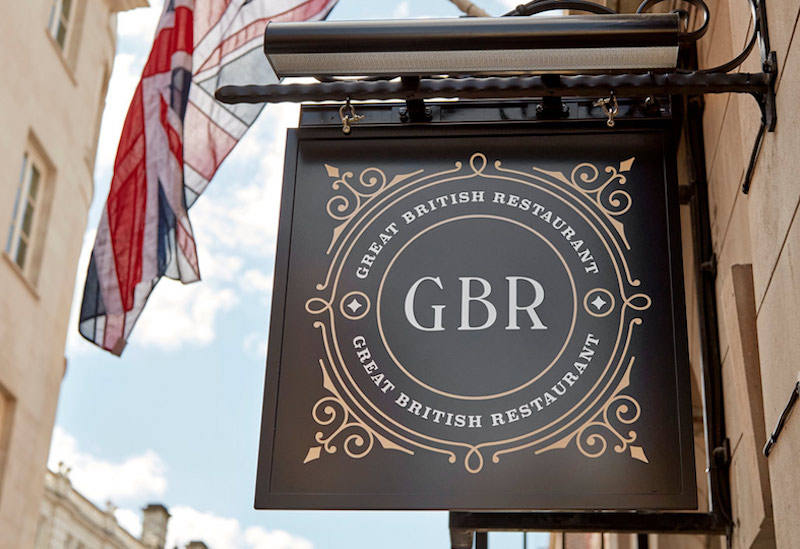
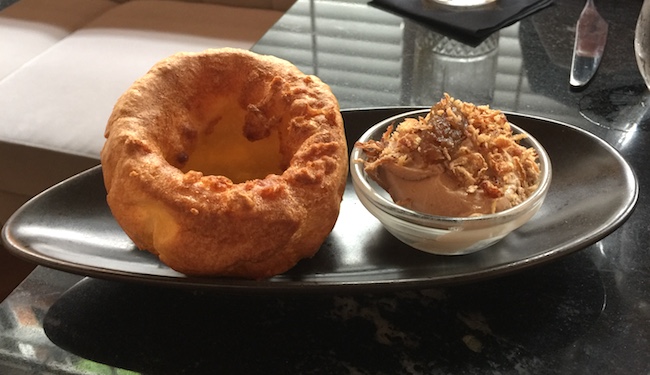
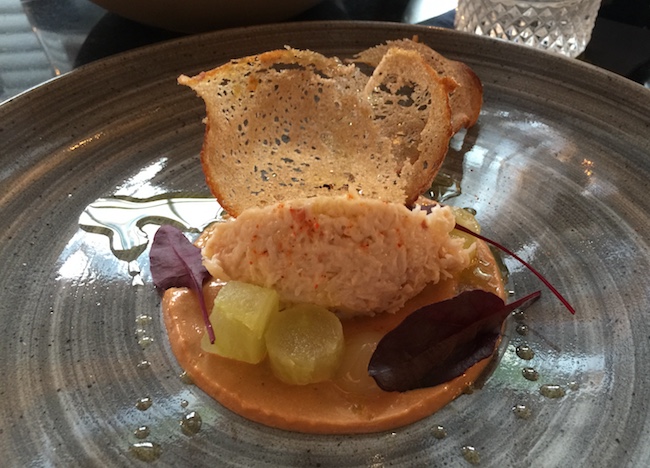
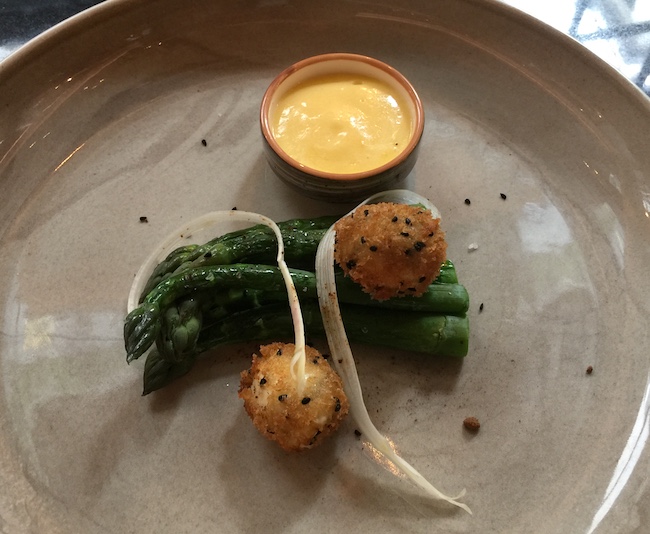
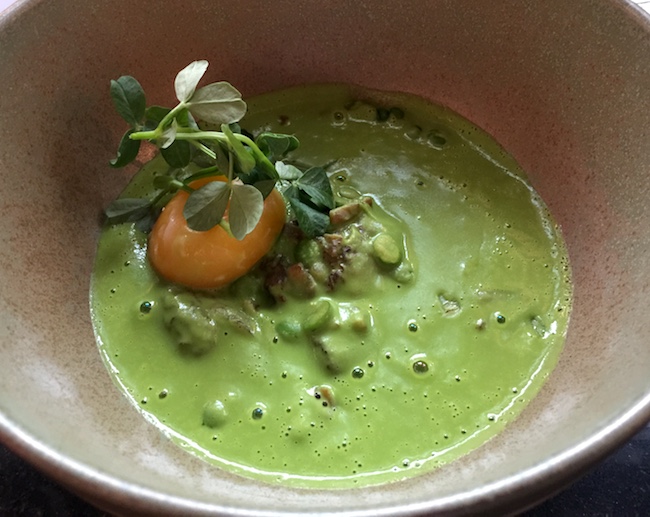

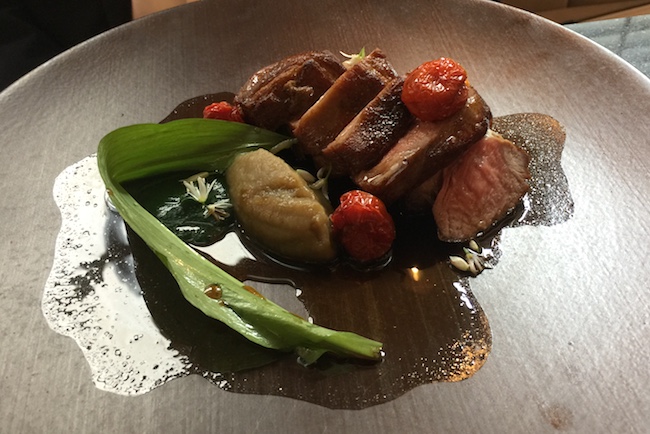
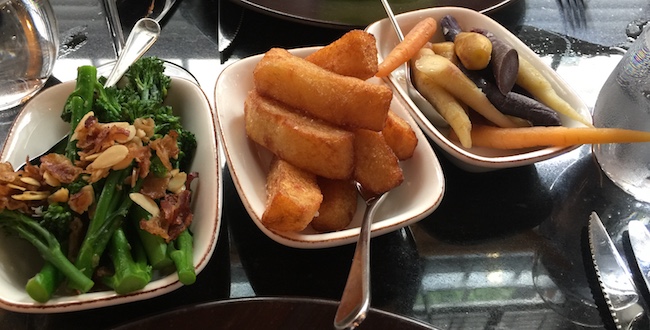

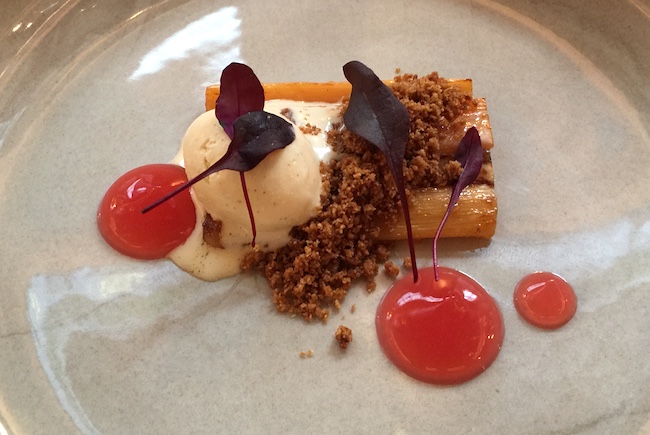




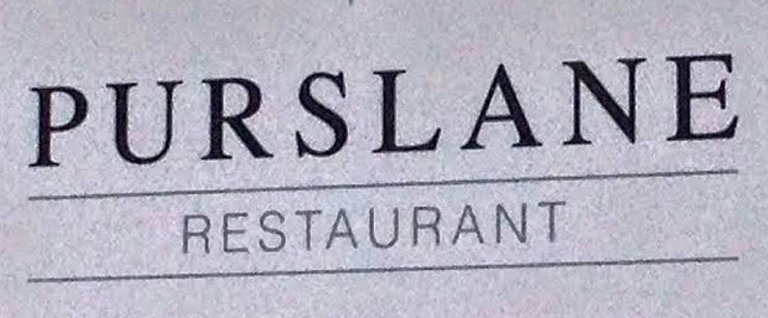
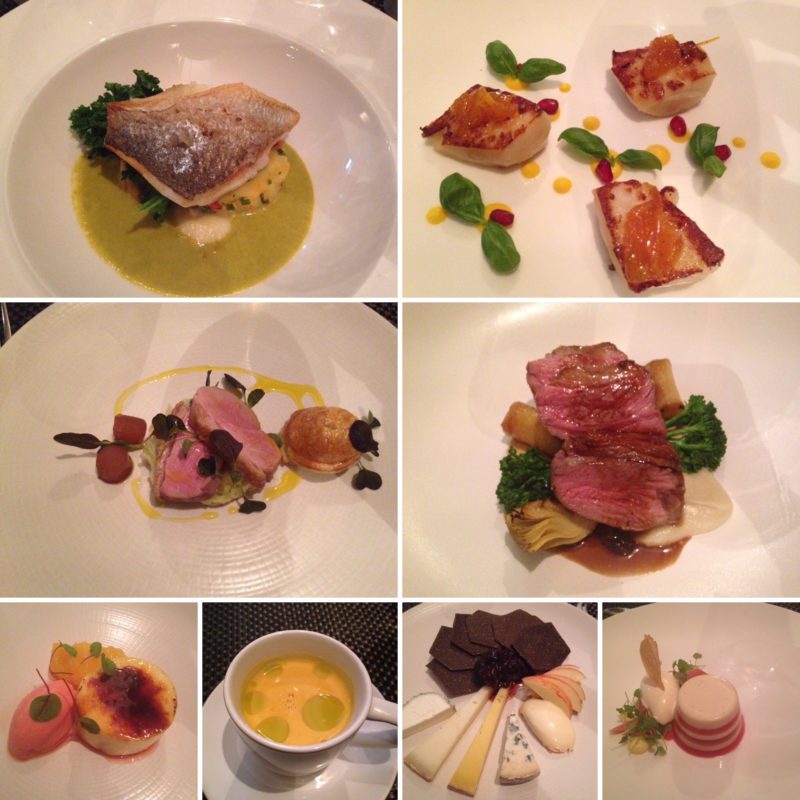

































 The Lawns Restaurant is the proud possessor of three AA rosettes, attracting both a regular, local following and those from further afield.
The Lawns Restaurant is the proud possessor of three AA rosettes, attracting both a regular, local following and those from further afield.




















 fine dining guide first visited in 2011, finding much to admire in the welcoming hospitality and generosity of spirit which epitomise the approach of chef-patron Richard Corrigan. Now that new Head Chef Alan Barrins has been at the helm for over a year, it seemed appropriate to revisit.
fine dining guide first visited in 2011, finding much to admire in the welcoming hospitality and generosity of spirit which epitomise the approach of chef-patron Richard Corrigan. Now that new Head Chef Alan Barrins has been at the helm for over a year, it seemed appropriate to revisit.












 So when it was decided, in 1975, after having been in the UK for five years that the French manager would move on to something new in the company I was officially promoted to editor of Michelin Guide Great Britain & Ireland. This was a fairly natural progression, the French hierarchy knew me by then, I could speak French, there were also coordinators in head office whose responsibility was to ensure that all the geographies were singing off the same hymn sheet for Michelin and they were more than satisfied with the early work completed in Great Britain & Ireland.
So when it was decided, in 1975, after having been in the UK for five years that the French manager would move on to something new in the company I was officially promoted to editor of Michelin Guide Great Britain & Ireland. This was a fairly natural progression, the French hierarchy knew me by then, I could speak French, there were also coordinators in head office whose responsibility was to ensure that all the geographies were singing off the same hymn sheet for Michelin and they were more than satisfied with the early work completed in Great Britain & Ireland.



 One such gem, undiscovered by fine dining guide until recently, is Wedgwood, which opened in 2007. Nestled amongst a row of terraced outlets in Canongate, the lower, less crowded section of the Royal Mile, its modest shop front exterior belies the accomplished cooking and excellent service within. Owned by chef Paul Wedgwood and his wife Lisa who acts as front of house, it represents the culmination of a dream to provide fine dining cuisine in relaxed, agreeable surroundings.
One such gem, undiscovered by fine dining guide until recently, is Wedgwood, which opened in 2007. Nestled amongst a row of terraced outlets in Canongate, the lower, less crowded section of the Royal Mile, its modest shop front exterior belies the accomplished cooking and excellent service within. Owned by chef Paul Wedgwood and his wife Lisa who acts as front of house, it represents the culmination of a dream to provide fine dining cuisine in relaxed, agreeable surroundings.

